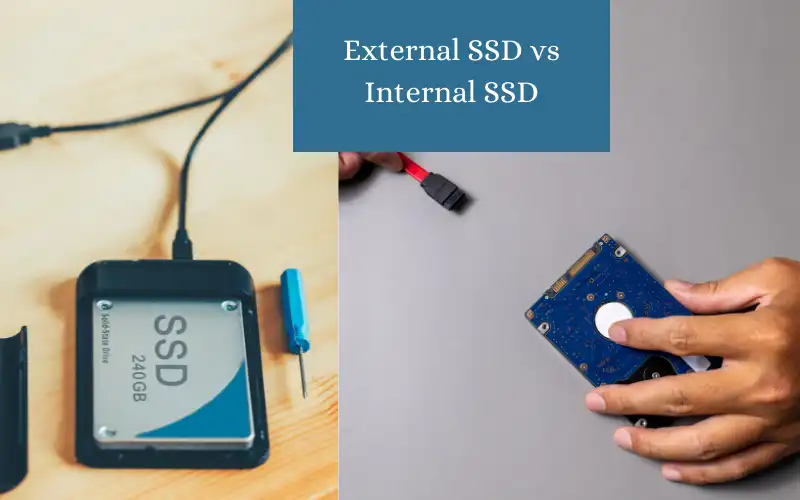Anyone who has ever dealt with a slow computer knows the importance of having a fast storage drive. For many years the standard storage drive has been to store everything on an internal hard drive.
However hard drives are notoriously slow and they can be even slower if they are getting full. As a result many people have started to switch to solid-state drives which are much faster and more reliable in performance.
There are two types of SSD drives in the market right now; one is the external SSD drive and the other is the internal SSD drive. But both of these storage drives come with different pros and cons.
But which drive is better? That comes down to which one you need. This blog aims to discuss the differences between an external SSD vs internal SSD which will help you decide which one is best for you in different situations.
What is SSD Drive?
Solid State Drive is one of the most cutting-edge technologies used in today’s high-end laptops and desktop computers era. A Solid State Drive is generally known as SSD and it is a kind of small storage memory used to store data in the same manner as a hard disk drive.
SSD has many advantages over HDDs and they are most useful in laptops and desktop computers with high-end graphic cards a fast processor and a good amount of RAM. It increases the overall speed of the computer and its overall graphical display.
Pros and Cons of External SSD vs Internal SSD
Internal SSD Offers Much Faster Speed
When it comes to external SSD vs internal SSD the debate about which one is faster is often heated. While external SSDs offer the convenience of portability they can often be slower than internal SSDs due to their lower data transfer rate.
Internal SSDs on the other hand offer much higher data transfer rates because naturally it is an internal part of the computing system but can be more challenging to install. So which one is the winner?
An internal SSD is probably your best bet if you’re looking for raw speed. However if you need the portability of an external SSD and are willing to sacrifice a bit of speed then an portable drive may be a perfect choice.
Internal SSD is Cheaper in Most Cases
There is no simple answer to this question as the cost of laptop internal and external SSDs can vary greatly depending on several factors. In general however external SSDs are more expensive than internal SSDs. For example the price of a Crucial MX500 1TB internal SSD is 94.99$ and the cost of a SanDisk 1TB is $134.00.
Also the price of an external SSD can vary depending on the brand utility features and speed. So if you’re looking for an affordable storage device an internal SSD is probably your best bet. However if you need a lot of storage space and fast data transfer speeds you’ll likely have to pay more for an external storage drive.
External SSD is Easy to Carry & Internal SSD is Difficult to Upgrade
One of the critical deciding factors is portability. Internal SSDs are designed to be installed inside a laptop while external SSDs are portable devices that can be connected to a computer via USB or other means.
External SSDs offer high portability since they are small and lightweight. This makes them ideal for carrying around in a bag pack or even in your pocket. But they are not safer from being dropped or bumped since they are not installed inside the laptop.
Furthermore one should be careful when buying an internal SSD because they are generally not accessible to upgradeable and the owner needs to have technical knowledge of them.
Reliability
The internal SSD is more reliable against phycial demages because it is less susceptible to damage than an external SSD. Portable drive can be damaged by shocks and drops whereas their casing protects internal storage.
Furthermore internal SSDs tend to be hotter and require more cooling leading to failures. External SSDs do not have this problem because they stay more relaxed and are less likely to fail.
Conclusion
There are a few key factors to consider when it comes to the pros and cons of internal SSDs vs. external SSDs:
